 Former Shaker village in Hancock, Massachusetts that was established in 1791.
Former Shaker village in Hancock, Massachusetts that was established in 1791.
The Shaker religion began in Manchester, England in 1747 and found its leader in a charismatic young woman named Ann Lee. In 1770, she is said to have had visions and revelations which taught her that only by renouncing sexual relations could humankind ever achieve entrance into heaven.
They believe in pacifism, celibacy, communal living, and gender equality. In the nineteenth century Shaker worship included singing, shaking, and ecstatic dance, which is why they were called the “Shaking Quakers,” or “Shakers.”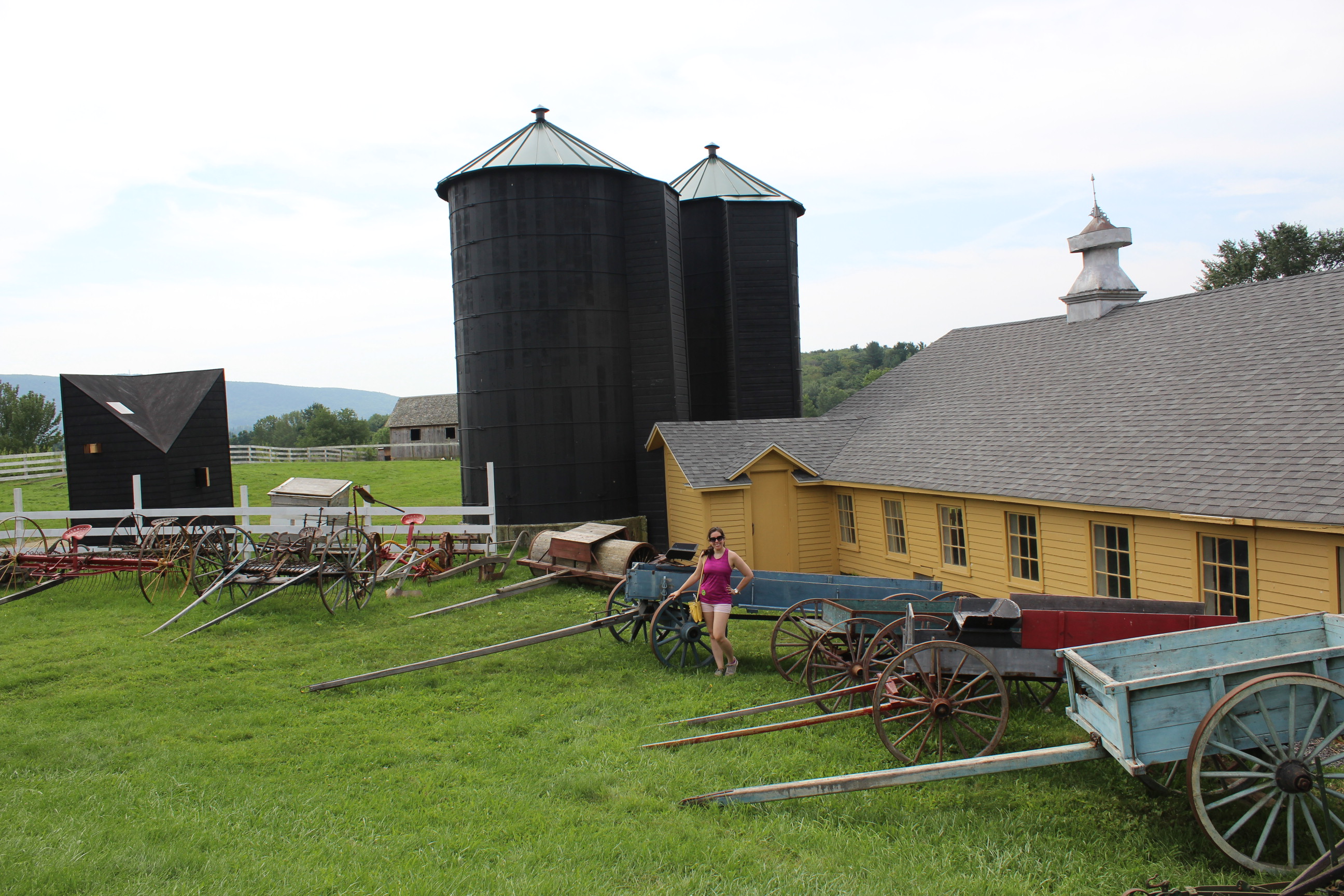
One of the most notable buildings is the “Round Stone Barn” built in 1826. That barn was built in a circular shape for several reasons, the primary one being that it was the most functional.
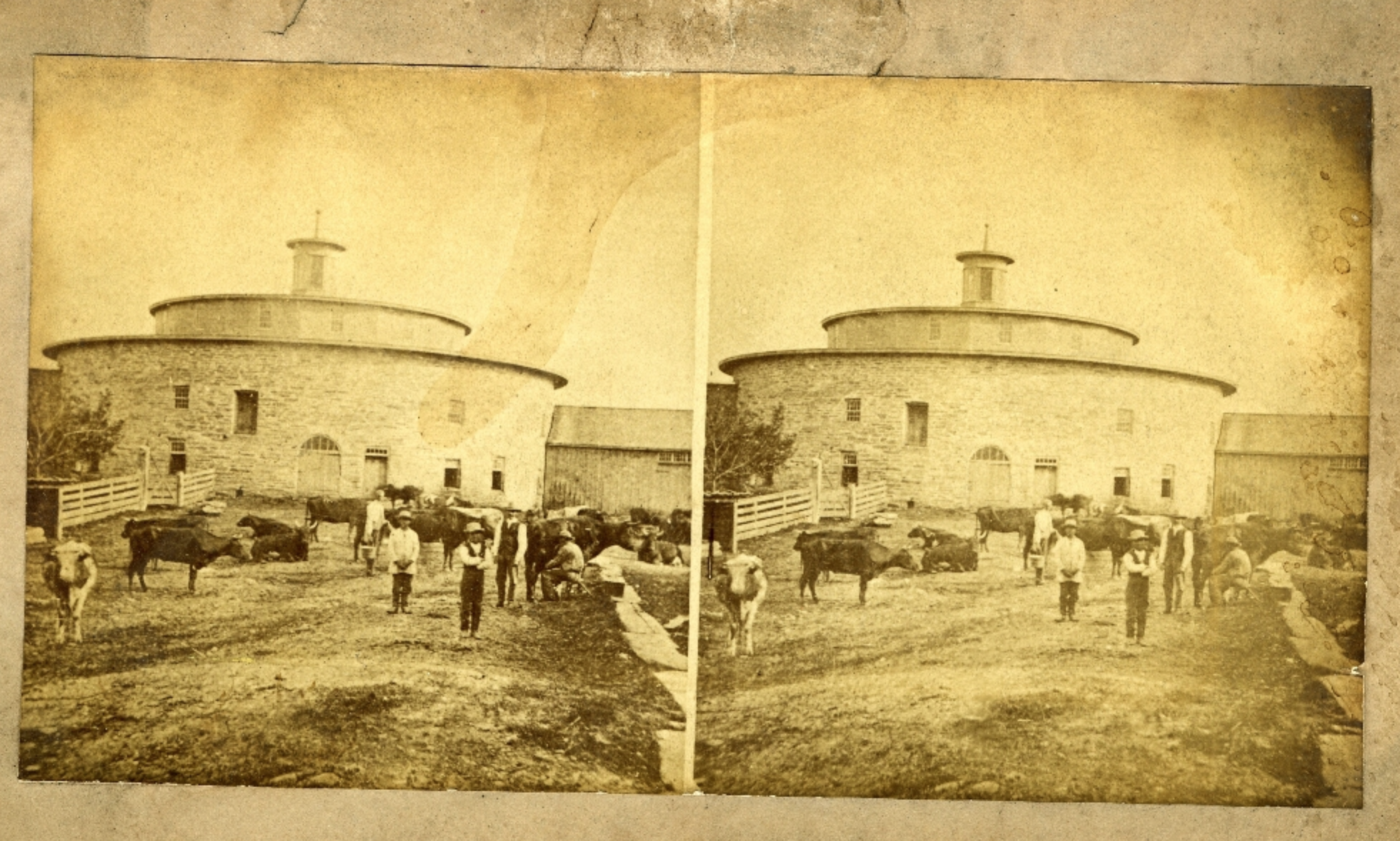
The Round Stone Barn is the only circular barn ever built by the Shakers. The Round Stone Barn offers ground-level access on all three levels. Wagons entered on the upper level to deposit hay into the central haymow on the main floor below.
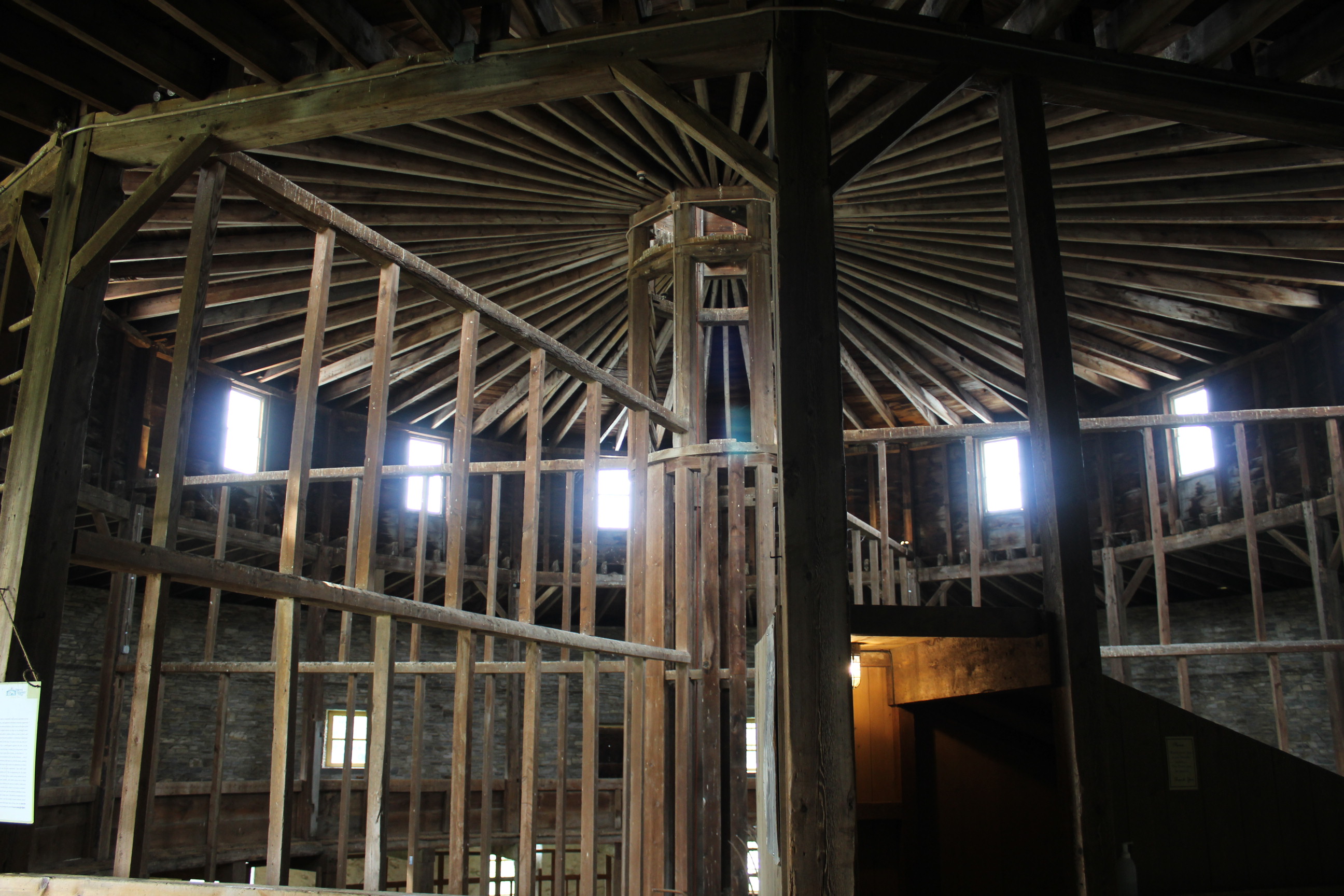
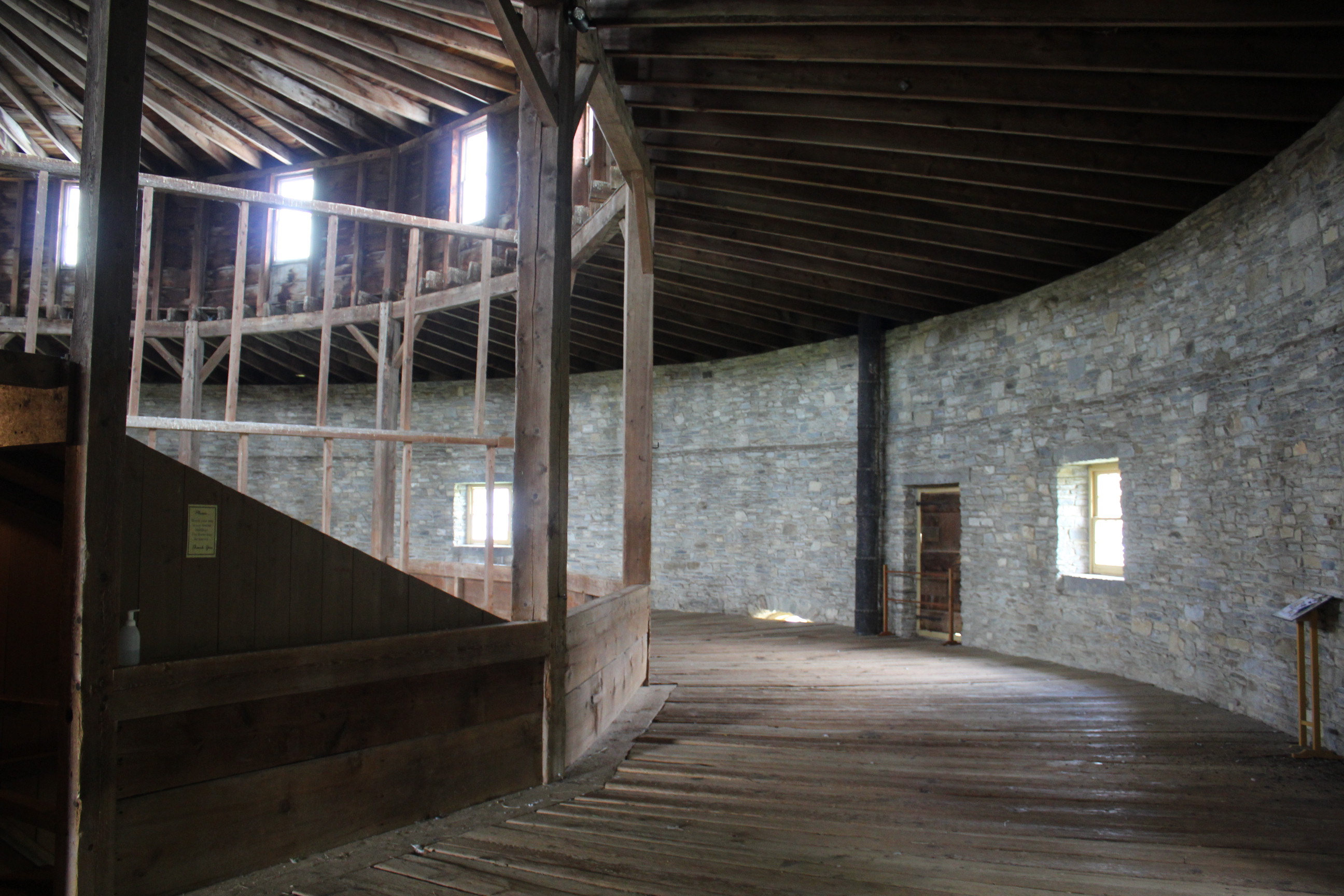
People would drive the empty wagons around the circular barn floor and exit the same door they came in, eliminating the potentially dangerous activity of backing wagons out of a barn. The cows stabled on the main floor faced inward toward the haymow for ease of feeding. Manure shoveled through trapdoors to the cellar was stored until needed as fertilizer in the gardens. The Shakers maintained a working dairy farm at Hancock into the 1950s.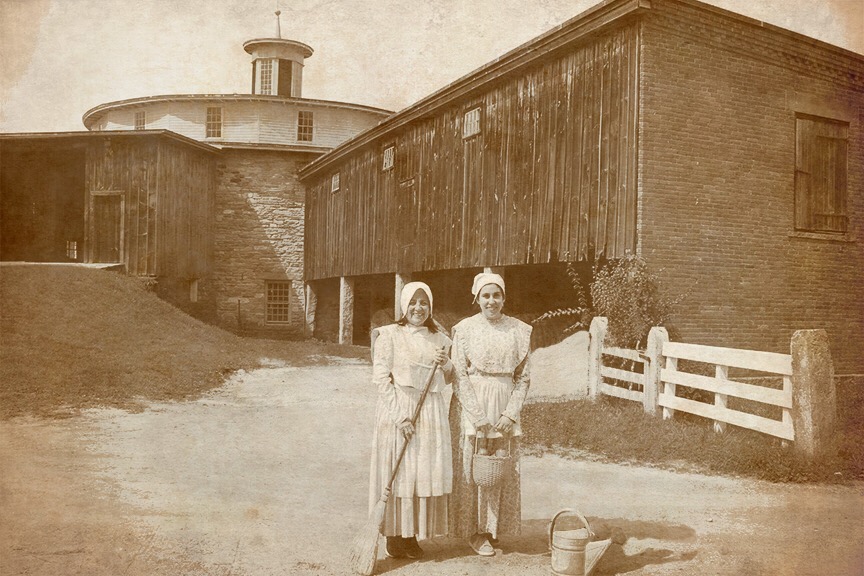
Sister’s Dairy and Weave Shop:
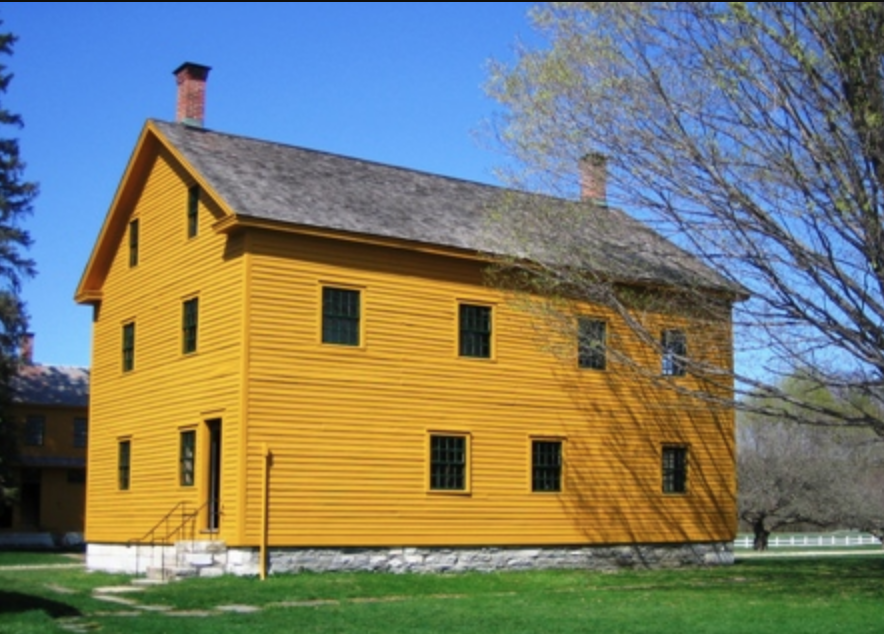 The Dairy is situated over a natural spring that supplies cold water to a stone basin where milk products were set to cool. The second floor of the Dairy was added sometime after 1820 and was used as a weave loft. The Sisters wove cloth for clothes, wove rugs, and made bonnets. The constant demand for fabric needed by the ever growing family kept the shuttles flying.
The Dairy is situated over a natural spring that supplies cold water to a stone basin where milk products were set to cool. The second floor of the Dairy was added sometime after 1820 and was used as a weave loft. The Sisters wove cloth for clothes, wove rugs, and made bonnets. The constant demand for fabric needed by the ever growing family kept the shuttles flying.

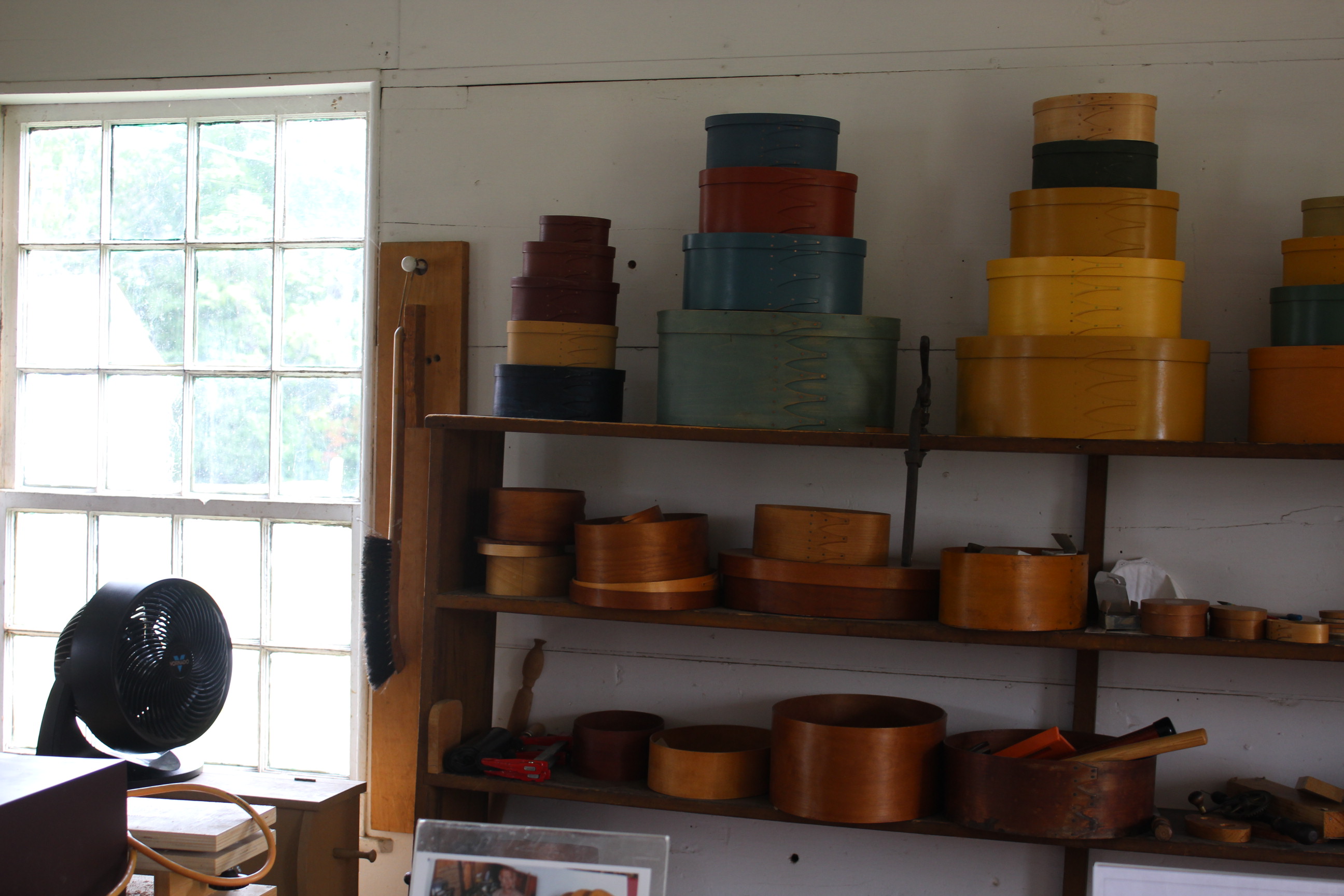
As the industrial activities of the sisters became more complex, other structures were raised to meet the specialized needs of both brethren and sisters, such as clothier shops, seed shops, and nurse shops.
Other shops were built devoted solely to the occupations of the female line such as the packaging of medicines, drying of sweet corn, and the manufacture of sewing notions and boxes.
1830 Dwelling:

Built in 1830, the Dwelling housed 100 Brethren and Sisters in a communal dormitory setting. It contains unique and efficient design elements such as “sliding cupboards” (dumbwaiters) and “borrowed light” windows placed on interior walls and ceilings to distribute sunlight and fresh air throughout the large structure. The construction reflects the Shakers’ principles of celibacy and equality for all members: It is divided in half, with Brethren and Sisters using separate doors and stairs at all times.

The 1845 Millennial Laws ( rules to live by which also helped establish clear lines between Shakers and the World. They provided guidance and orders to Believers on nearly all aspects of everyday life: how to worship, how to conduct temporal business, and how to interact with other Believers, among others) states the following concerning furniture in Retiring rooms :

One Rocking Chair in a room is sufficient, except where the age reside. One table, one or two stands, a lamo stand may be attached to the woodwork, if desire. One good looking glass, which ought not to exceed 18″in length and 12″in width, in a modest frame. A looking glass larger than this, ought never be purchased by Believers.
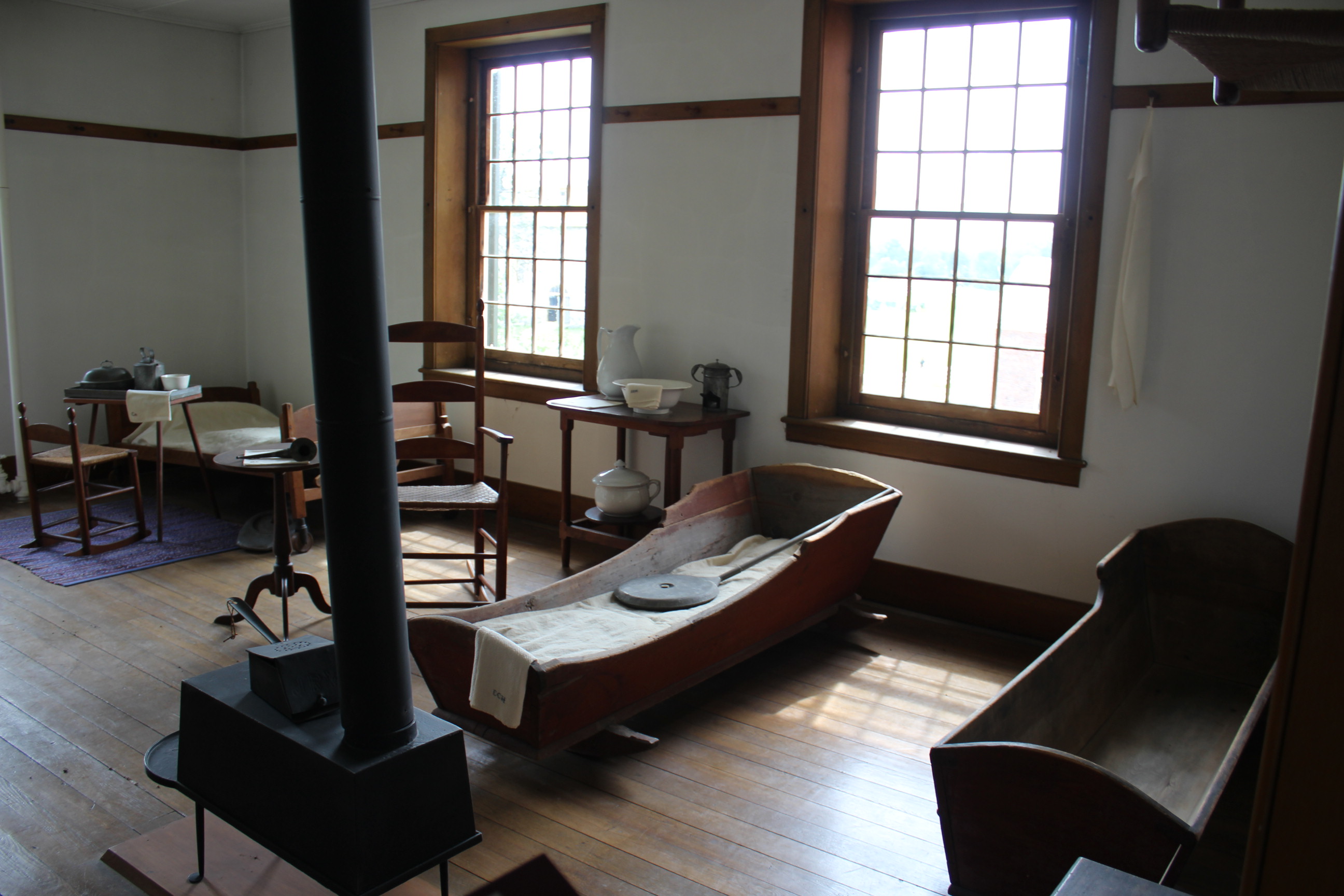
Shakers built and equipped infirmaries where Shaker physicians provided care to aged and infirm members. Some Shaker physicians were send away from the community for training, and for learning such skills as dentistry and surgery. They advocated for a healthy lifestyle that encourage spiritual serenity, balanced work and rest, and limited use of alcohol and tobacco.
Water Power:
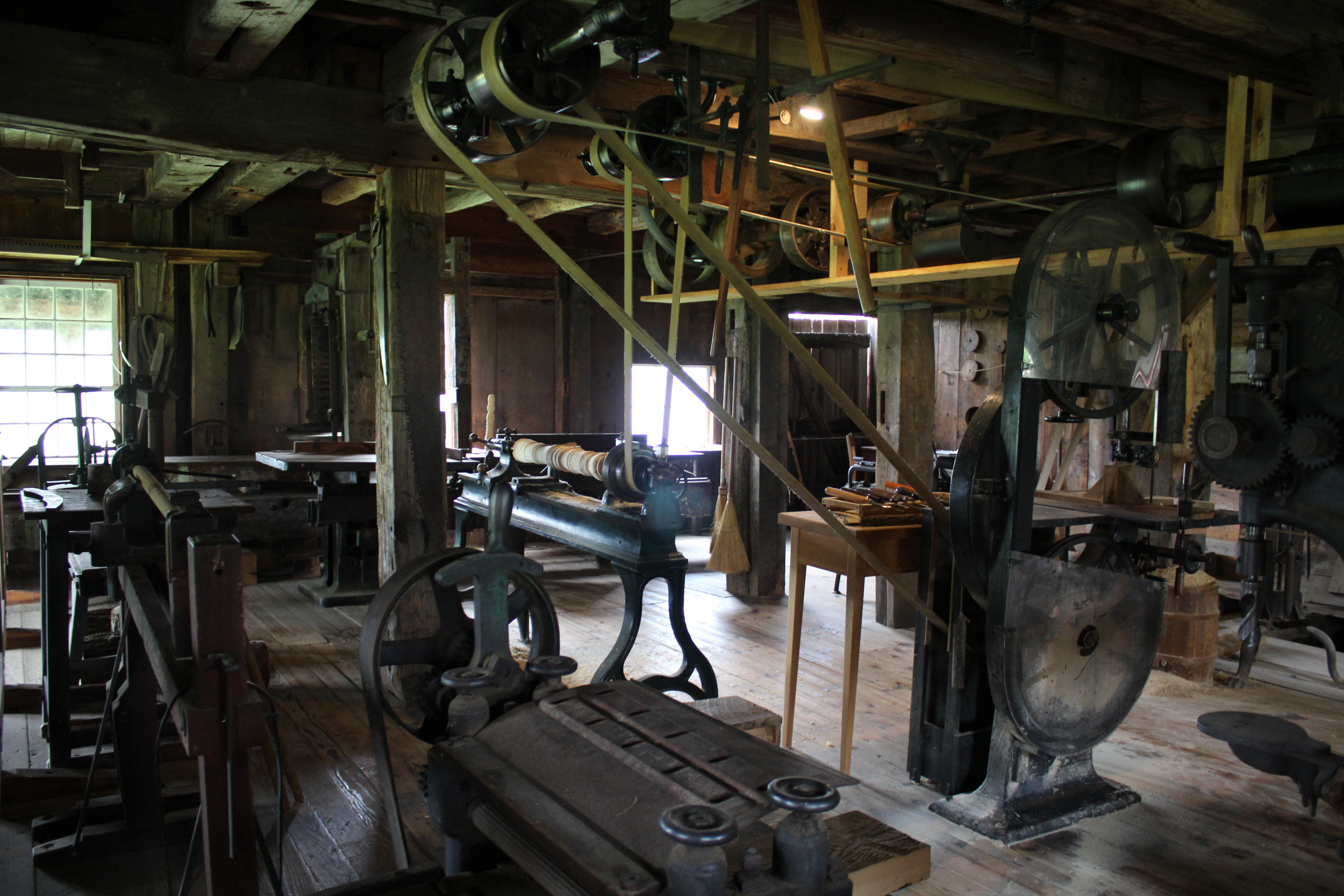
By 1813 a wooden overshot waterwheel 20’in diameter power the equipment in the woodworking rooms and in the laundry room. In 1858, eager to incorporate modern technology, the shakers replaced the overshot wheel with a more advanced water turbine, greatly increasing efficiency and productivity.

Shaker women washed clothes and bedding for almost a hundred people in their communal family. Working together reinforced Shaker’s ideal of union and labor. Sometimes they sang cheerful sacred songs. Sisters rotated regularly through different tasks.
The building was divided into the women’s laundry and the men’s machine shop. The water that powered both the turbine and the washing machines was brought down from Shaker reservoir through pipes. The water exits the building through a lengthy drain that carries it to the forest beyond the south fields.



Shakers sought freedom from earthly possessions and heavenly purity, so restraint and minimalism were key principles of their architecture and design practices. Their buildings, rooted in Georgian and Dutch colonial architecture from New England and the mid-Atlantic states, were unadorned, mostly symmetrical and quietly elegant.

Furnishings were kept to a minimum for the sake of simplicity and order, and art was considered useless. Bare white plaster walls in interior spaces made it hard to hide dirt and and pegboards lined most rooms to keep household items off the floor for easy cleaning.
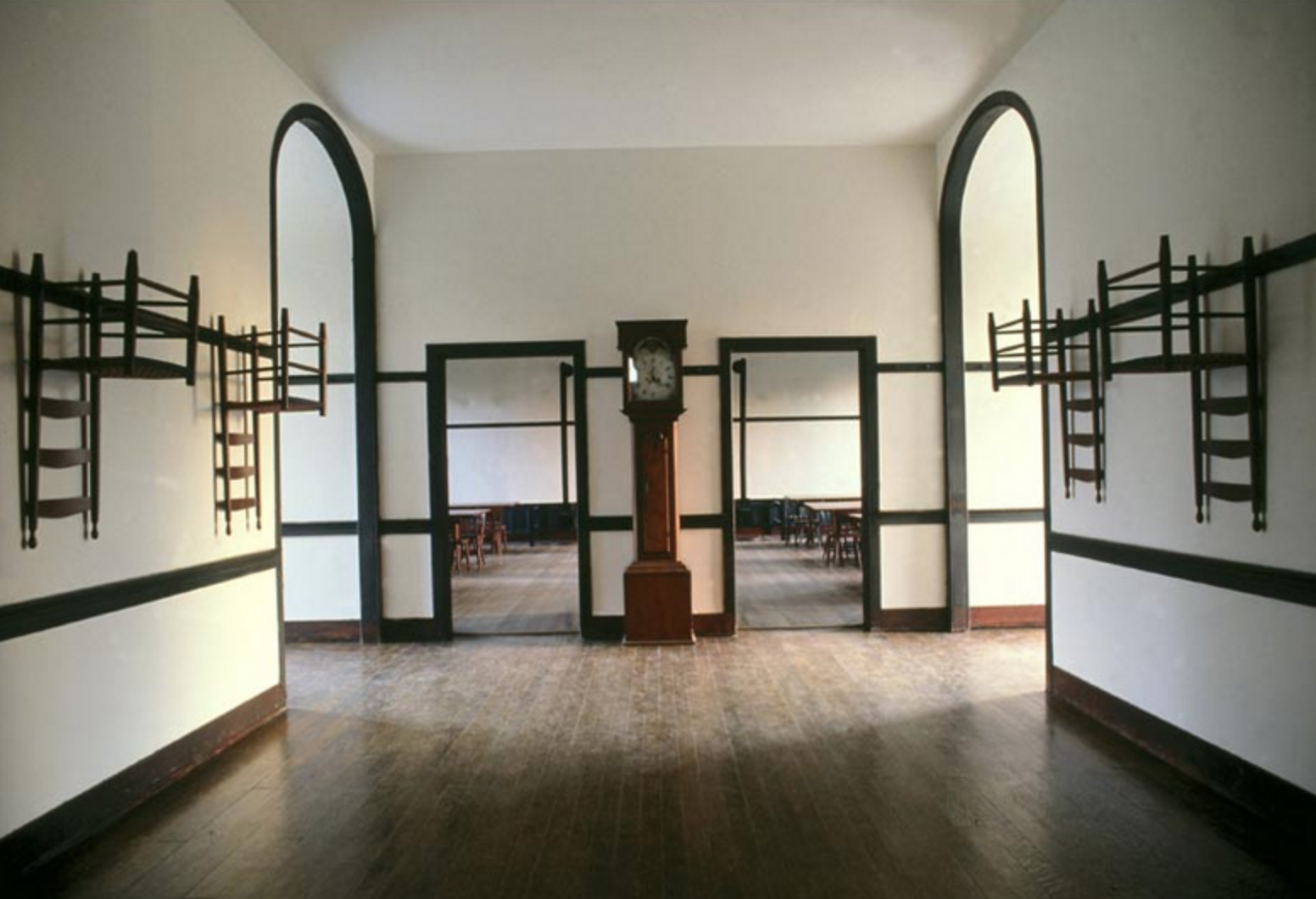
Ladder back chairs were hung upside down to keep the woven seats from gathering dust.
